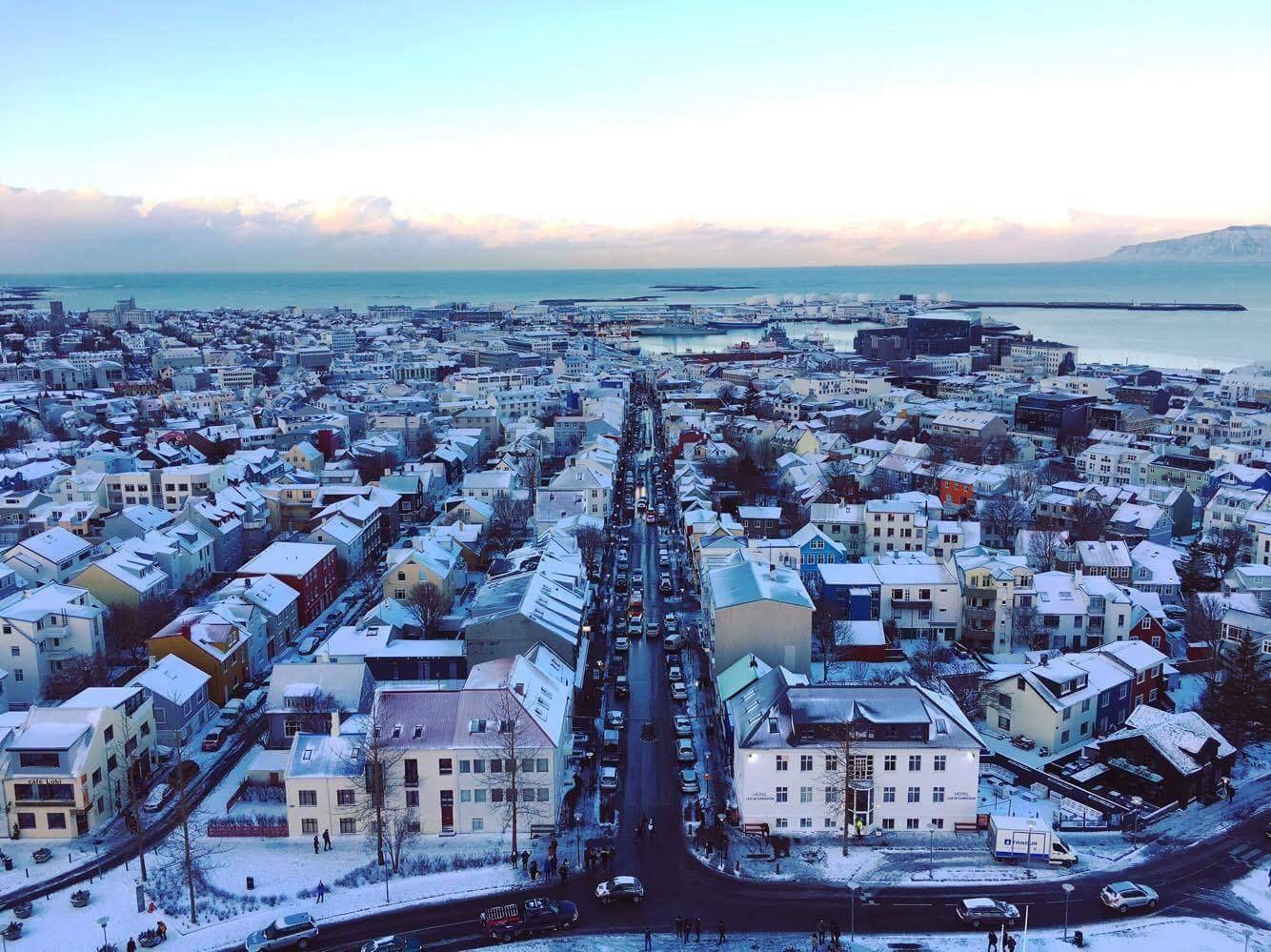
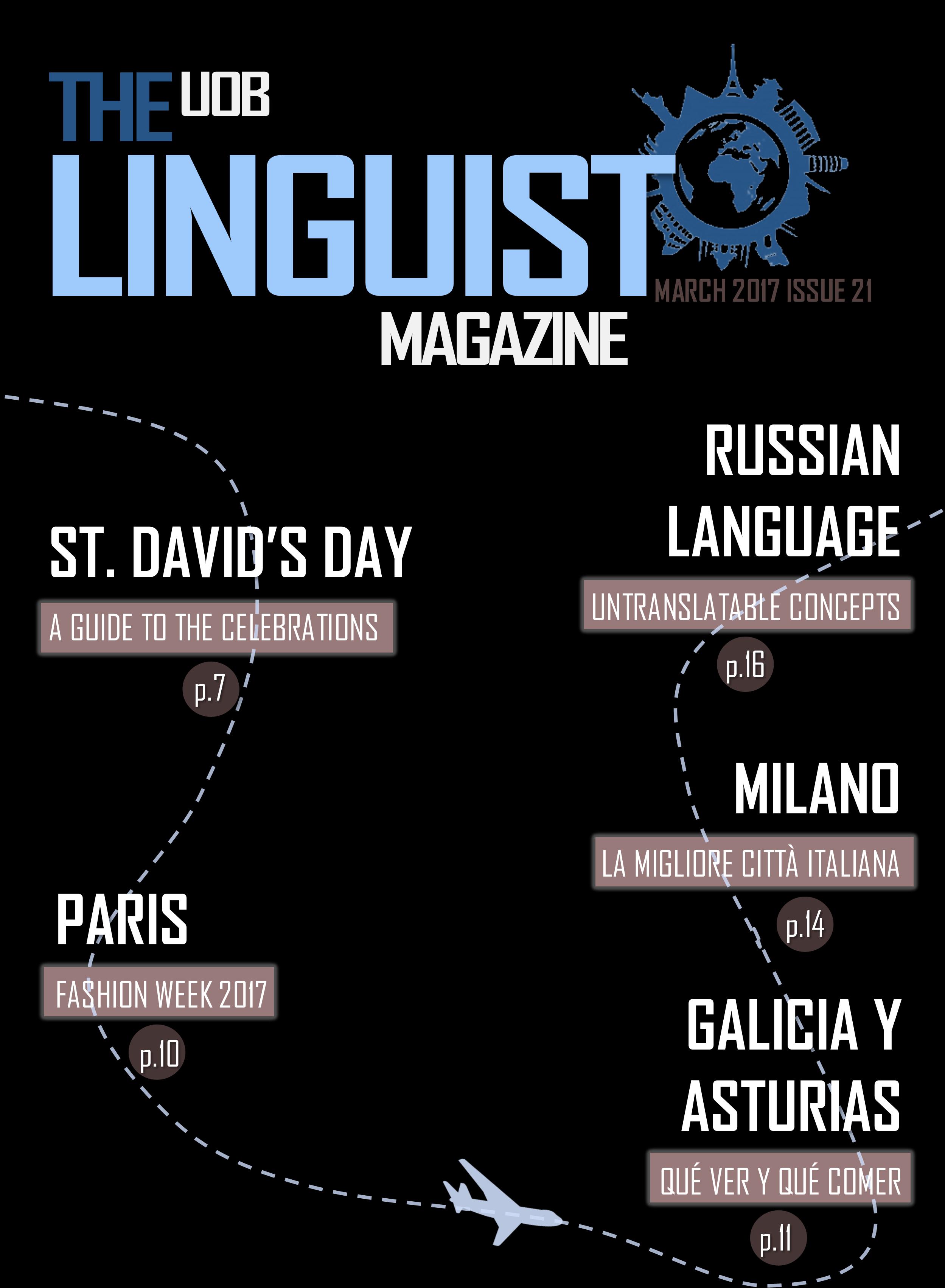



Chloe Nickeas writes about global politics and the rise of populist parties
PAGE 3
CHAIR: KIA MARIE HUNT
SECRETARY: KATYA BROWNE
TREASURER: HENRY WAKELAM
CREATIVE DESIGNER: MARY MCGOWAN
SOCIAL SECRETARY: NATALIE ELLIOT

PUBLICITY OFFICER & DESIGN
ASSISTANT: ZOE LUMSDEN
PROOF READER: SARAH DANIELS
PROOF READER & GERMAN: RACHEL MORRIS
CURRENT AFFAIRS & PORTUGUESE: CONNOR HAINES
CULTURE: JENNY NICHOLLS
LIFE & STYLE: BEN HILTON
FOOD & DRINK: YANA PETKOVA
TRAVEL: STEFFI BALLMANN
FRENCH: LUCY HARKINS
RUSSIAN: ALEX CAVES
CHINESE: NINA MA
ITALIAN & CATALAN: OLIVER EDWARDS
POLISH & UKRANIAN: CHARLOTTE SIMPSON
BULGARIAN: BORIS GENOV
SPANISH: EMILY DARBY
COVER PHOTO: Demi Dale Iceland
ABOVE PHOTO: Mary McGowan Naples Beach, Florida
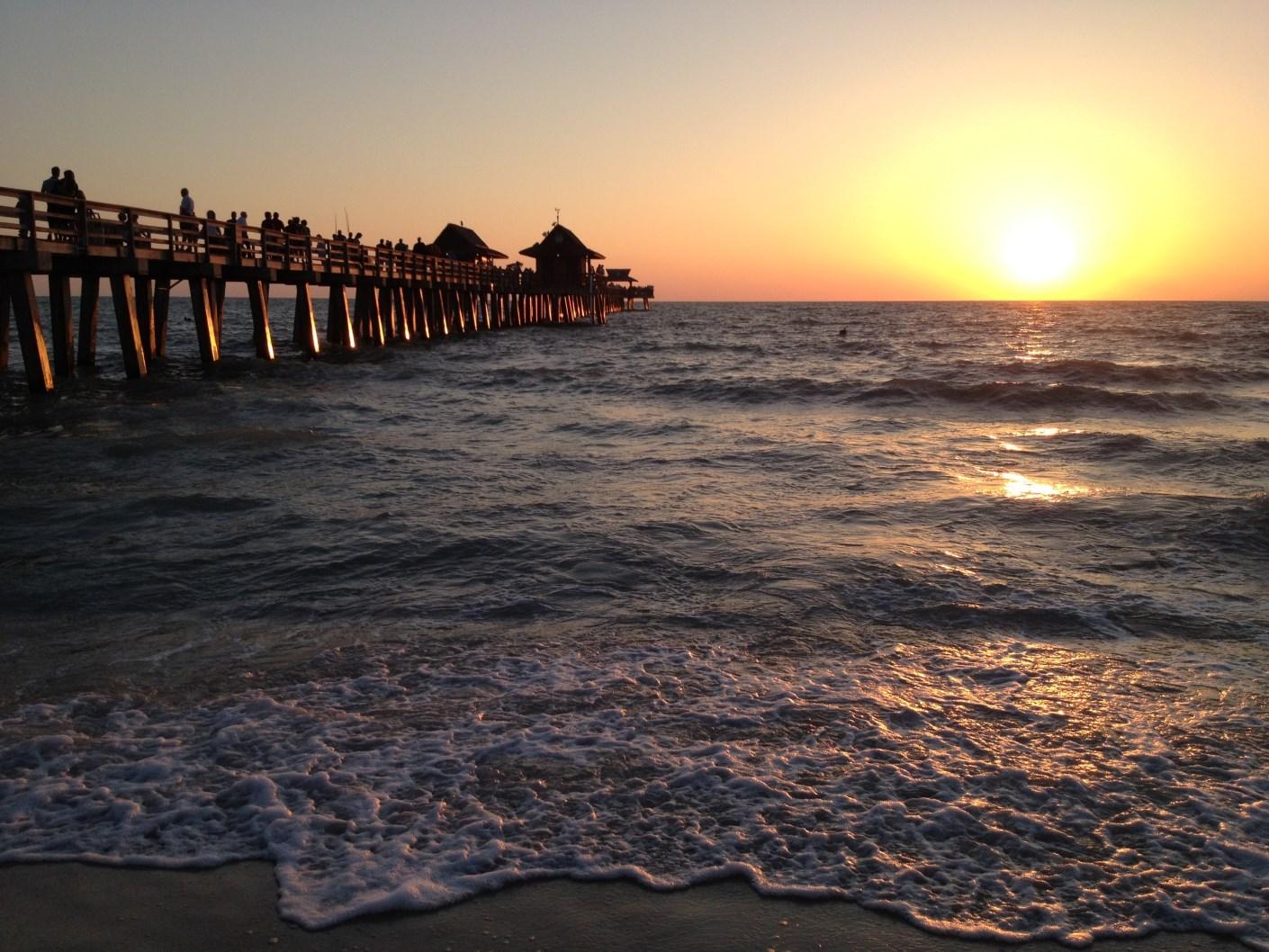
Want to see your photo on the cover? Send us an email at linguist@guild.bham.ac.uk
























Ciao! Hola! 你 好!
Welcome to the twenty-first issue of The UoB Linguist Magazine!
You’ll be happy you picked up a copy, as you’re in for a treat.
With twenty pages, this issue is our biggest yet, and it’s packed full of content that language, travel, and international culture enthusiasts will love...
Firstly, I just have to mention this issue’s cover image of Iceland, by Demi Dale, winner of our Winter Photo Competition: it is stunning! We had so many beautiful entries that we have dedicated the last two pages of this issue to showcase them again (just in case you didn’t see them all over our Instagram!) Thank you to everyone that entered, and I hope you all enjoy the fantastic variety of photos as much as I did.
In ourEnglish language sections you will find politics, book reviews, travel anecdotes, and a whole lot of culture to get your teeth stuck into. A particular favourite of mine is Ayesha’s intricately detailed piece about her encounters in Amsterdam, with a focus on the ways in which the city has one foot in the
by Kia Marie Huntpast and one in the present: it is a particularly interesting read. I would also recommend Yana’s recipe for ‘sweet pasta bake’, yes, you read that right! I must admit I’m tempted to try it.
Our language sections are brimming as ever. Francophiles will discover both French politics and French fashion week, and Spanish lovers can read themselves away to Galicia, Asturias, Barcelona, and Valladolid in our double page Spanish spread.
If you’re interested in Portuguese, but you’re not sure how the language differs between Portugal and Brazil, read Megan’s article which highlights the main contrasts between vocabulary, grammar, and pronunciation- useful to know! I also especially enjoyed Josie’s guide to Milan, a fantastic city, and Alex’s article about untranslatable Russianwords andconcepts.
Last but not least, I must mention that we recently held the UoB Linguist AGM for 2017/18 and a wonderful team of people were successfully elected, the future of the magazine sure does look exciting! Remember to pick up our next issue in May to find out more about whowill be on next year’s team.
Thank you and happy reading!
PAGE 3: CURRENT AFFAIRS

PAGE 4: CULTURE
PAGE 5-6: TRAVEL
PAGE 7: LIFE AND STYLE
PAGE 8: FOOD AND DRINK
PAGE 9: DEUTSCH














PAGE 10: FRANÇAIS
PAGE 11-12: ESPAÑOL
PAGE 13: PORTUGUÊS

PAGE 14: ITALIANO
PAGE 15: БЪЛГАРСКИ and УКРАЇНСЬКИЙ
PAGE 16: 中文 and РУССКИЙ
PAGE 17: ABROADWITH
PAGE 18: WINTER PHOTO COMPETITION ENTRIES
PAGE 19: WINTER PHOTO COMPETITION RUNNERS UP



If you would like to know more about our magazine, our writers or have comments to make about our articles then feel free to check out our Facebook and Twitter pages or email us. If you wish to read more articles check out our website. We’re always looking for new writers and contributors, so don’t hesitate to get in touch!










It seems to be a daily occurrence that an incendiary remark from Donald Trump makes its way into news headlines, and this week has been no different. America has been promised its wall, all eyes were on Sweden when the POTUS vaguely but urgently implored us all to beware of what was happening “over there”, and according to Trump’s friend Jim, for some reason, “Paris is no longer Paris”. Very few of these statements are ever qualified when they are made - it is often either left to the media to interpret as they will, or for clarifications to come afterwards. It is this apparently unwavering courage in his own convictions that has enabled Trump to reach the top table of global politics ahead of the traditionally dominant liberalist party politics. Although President Trump has been determined to fight back against the ever-growing phenomenon of “fake news”, which he says is determined to undermine his administration, his latest comments about Sweden left many political commentators scratching their heads in confusion, with an apparent lack of credible sources behind his denouncement of what’s happening there – whatever that happens to be…


 By Chloe Nickeas
By Chloe Nickeas
Indeed, it is a very convincing brand of politics that has consumed America in recent months, and has led to the proliferation of several extreme right wing candidates in European elections and referenda. Nigel Farage came out in support of Trump’s comments on Sweden, reiterating the suggestion of the documentary which Trump allegedly watched that Malmo had become the “rape capital of Europe” as a result of Sweden’s liberal immigration policy. Furthermore, in the Netherlands, Geert Wilders has managed to maintain his lead in the Dutch opinion polls despite recently denigrating the country's Moroccan population, only two months after being convicted of inciting racial discrimination. However, in an era when liberal politics is very much on the defensive, an unlikely contender against rightwing nationalism has emerged in France. Marine Le Pen and the Front National are widely expected to triumph in the first round of voting in the presidential election, but the controversial candidate is expected to lose comfortably in the run-off to whomever she faces. But who will that be? With conservative candidate François Fillon embroiled in an expenses scandal and the socialists nowhere to be seen, step forward Emmanuel Macron, of the centrist En Marche! movement. He has bucked the international trend of polarised politics by embracing the centre ground, and has emerged as a front runner to take the reins from incumbent President François Hollande.
With one eye therefore on America and one on Europe, the spotlight falls on liberal politics and whether the rise of populist candidates across some of the world’s most prominent nations will disrupt the relatively comfortable political status quo. The unprecedented surge in support for nationalist candidates, particularly in Europe, places the immediate future of moderate politics in doubt, though a Macron victory in France would certainly prove to be a significant blockade to the spread of nationalism, as well as being perhaps the first sign that its growth has been overstated. It is worth noting that many of these outspoken, controversial candidates have experienced their surge in popularity since Brexit – which they have embraced as a victory for the nationalist movement and used as a springboard for their own agendas. Politics will always have its ebbs and flows, and only time will tell if we are heading for an extended period of dominance by populist politics, how far this trend will spread, and how long it will last…
With one eye on America and one on Europe, the spotlight falls on liberal politics
 Author: César Aira
Author: César Aira
100 pages and see the single date (27th May 1989), which suggests that ‘The Proof’ was written in the course of a single day. This may well account for the unfiltered dreamlike feel to the writing – even reading it felt like riding on a feverish wave of words, ideas, and bizarre characters.






‘The Proof’ by César Aira is the latest book from And Other Stories, an independent UK publisher of translated fiction. Described on the back as a ‘novelita’, this slim volume was originally published in Aira’s native Spanish in 1992, and has now been translated into English for the first time by Nick Caistor.
Aira is a hugely prolific writer from Argentina – to date, he has written over 80 books, an almost unimaginable feat for most of us. This achievement becomes a little clearer when you reach the end of this book’s
I found it a little hard-going to begin with, but once I’d got into the rhythm of the swirling sentences and the abstract style of prose, I found myself helplessly absorbed into its surreal premise. The story begins when the main character, Marcia, is unexpectedly drawn into the world of two “punks” calling themselves Mao and Lenin, who proposition her in the street one evening. The conversations between the three teenage girls are intense, philosophical and full of tension, sometimes to the point of being quite opaque with underlying meaning. The exchanges underline the deep sense of unsettling dread that builds up slowly and surely to an unpredictable and hugely dramatic climax.
If you’re looking for a small book that packs a big punch, ‘The Proof’ is guaranteed to leave you satisfied. I for one have a feeling that its characters and events will be lodged in my mind for a long time to come.


When something sounds too good to be true, it usually is. For that reason, people shouting "free food!" on campus are primarily met with my scepticism. However, on Thursday 9th February, I was having a particularly hungry day, and I found myself with only 20 minutes to spare for a bite to eat. So, I decided to stop being so close minded about this free food opportunity, and at least try to find out what was going on. As it turns out, I am very glad that I decided to enquire!
The people doing all the shouting were members of the Sikh Society. They explained to me that their religion values everyone as equal, and that service to one another is part of its teachings. I learned that if anyone were to enter a gurdwara (Sikh place of worship), they would be fed and given water, regardless of gender, race, or religion. For this reason, the Sikh Society were hosting their annual event ‘Langar on-campus’, as part of Sikhi Week. Inspired by their genuine passion, not to mention my grumbling stomach, I ventured to the marquee- and I did not regret it! Upon entry I removed my shoes, sanitized my hands, and had my hair carefully covered. I took my place on the carpet, just like everybody else, and we sat there on the same level, as equals. The food we were given was truly
delicious, and I was overwhelmed by the kindness and generosity that I felt.
I made new friends, learnt new things, and filled up on the best lunch I could ask for. What a beautiful, selfless way for one group of people to share their beliefs with others; thank you Sikh Society!
(To find out more about upcoming events, such as the sponsored charity walk for Sikh Youth Birmingham on March 22nd, visit facebook.com/bham.sikhsoc)





 By Ayesha Hashim
By Ayesha Hashim
Typically, one does not associate travelling with loss. However, just before I depart for a brief visit to Amsterdam in early January, it occurs to me that I’ve never left any place confident of its character, its subtleties. My visceral, one-ofkind experiences - the ones that come from being in a particular place at a particular time - dematerialise with little residue, resurfacing in memory only occasionally. I am determined to make my trip to Amsterdam different.
Rows and rows of bicycles – this is my first defining sight of Holland. Glimpsing them from a plane window, their miniature scale for the moment endears them. It is only after landing that I will comprehend how integral they are to the social fabric of the city; how they constitute its veins.
Tucked away in a pocket of central Amsterdam I encounter a gorgeous, architectural gem of a building – a piece of the campus of the University of Amsterdam. It is just prior to this that I realise that Amsterdam is truly a student’s city . From the electric atmosphere in its endless range of bars and nightclubs (we dance a night away in AIR Amsterdam), to its array of dimly-lit but surprisingly well stocked secondhand book shops, ideal for whiling away a Saturday or cultivating a literature collection on a budget, the city seems to fulfil every want. Sampling Dutch nightlife is highly recommended.
The apartment setup of central Amsterdam, decorated with beautiful, distinctive verandas, projects the image of a youthful urban community (a lovechild of Paris and New York, perhaps), reinforcing its suitability for students. In reality, the presence of young families and older generations indicates that its appeal runs deeper.
a key theme. Later, I note how fitting the tragic romantic backdrop of the city’s canals would have been for both the novel’s scenes and the story behind its borrowed title (the Beatles’s song it references was inspired by Lennon’s extramarital affair). Amsterdam provides the ideal environment for meandering and perusing, and doing so might lead to some unexpected discoveries.
Here literature seems inextricably and fascinatingly linked to history – wandering down a central alleyway busy with elderly booksellers, cigars in mouths, kept company by dusty collections of fiction at sunset, we seemed to have stepped back in time. I pick up a Japanese cult classic called “Norwegian Wood” - somewhat disturbingly, suicide is a
Our visit to the Anne Frank House produces the most sombre moments of my stay. Room by room, in the scaled reconstruction of the annexe, we unpack tragedies that feel simultaneously familiar and foreign. The grief of a father losing his young daughter; the cataclysmic loss intrinsic to the denial of life - Amsterdam, with sleight of hand, suddenly triggers something powerful in my comprehension of today’s global refugee crisis. Although Germany is the obvious choice for such historical engagement, it would be unwise to rule out the offerings of the rest of Europe; the Anne Frank House is a case in point.
The intersection of past and present narratives can be seen elsewhere. Amsterdam’s cobblestone pavements and quirky cafes manage to reference a quaint little town that feels like it probably would have been usurped by gentrification some years ago. It is seamlessly interwoven with a very modern city feel, which it maintains claim to most strongly through the cinemas and theatres of the Leidesplein. Nowhere does the combination feel jarring (if there can ever be a suitable amount of gentrification, this is it), but the Nieuwmarkt and its surrounding Chinatown is the greatest testament to how well it works. Its antique market practically cries out for tourists to invest in a material souvenir; the East Asian culinary offerings, adapted to the
Literature seems inextricably and fascinatingly linked to history...Hot chocolate at an independent café on the Museumplein
Dutch palette, feel deceptively modern, but are actually a longstanding part of its culturally diverse fabric. Devoting at least a few hours to these places is essential – you will revel in the way Amsterdam harmonizes the dichotomous forces of past and present.









Some might even say Amsterdam’s got the future - with respect to traditional culture - figured out: when we get to the Stedelijk Museum (of contemporary art) at around 7pm on a Friday night, it is remarkably busy. It seems to suggest
that Britain, with its early museum closures, is missing a trick. A highlight was the short film we watched sitting cross-legged cross-legged on thick white carpet(!);a collective puzzlement over its content united everyone in the room. Eventually I realised that it was making the contentious statement that the beauty of life lies in its fundamental pointlessness, propelling my existential pondering. If the works of Rembrandt and van Gogh are swimming in front of your eyes, the Stedelijk Museum will be a refuge; if you can’t get enough, a visit will nonetheless diversity your experience. All in all, the Museumplein is your cultural oyster –take advantage as you please.
I leave indulging half playfully in the idea that Amsterdam’s underground must contain some sophisticated time vortex mechanism that allows the city to keep one foot in the past and one in the present so gracefully. It was naive to think that all of its quirks and eccentricities could be captured in one visit (the Red Light District, for one, remained unvisited) but I depart humbled by, and grateful for, the wealth and richness of my experiences. When nostalgic reflection calls, I certainly won’t be short of those visceral, in-themoment memories.

Often dwarfed in significance by the boozier and more globally renowned St. Patrick’s Day at the end of March, St. David’s Day is celebrated annually in Wales on the 1st March and celebrates the life of Saint David. Dewi Sant (Saint David) is thought to have lived in the 5th Century A.D., carrying out miracles, curing the blind and even leading a pilgrimage from Wales to Jerusalem. Apart from that, not much is known about the enigmatic patron saint but nevertheless, his saint day is an excuse for people, young and old, to join in with celebrations. All over Wales there are parades, Eisteddfodau (glorified Welsh talent shows with singing, poetry and theatre), and dressing up in traditional Welsh dress; old fashioned miners’ wear for men and Welsh lady dresses, complete with black bonnets, petticoat, tartan dress and compulsory daffodil for women.
Anyone looking to fully immerse themselves in the festivities of Saint David’s day can also prepare a wide range of Welsh delicacies. These tend to incorporate ingredients that were traditionally affordable or widely available, such as sea food, stews and soups, and, who can forget, the infamous Welsh rarebit, which is essentially a bit of posh cheese on toast with mustard. My favourite Welsh food, and still regularly cooked by my Mum on a Welsh bakestone handed down through the generations, is the humble Welsh cake, or picau ar y maen as it’s called in Welsh. The closest thing you could compare it to elsewhere in the world would be the English scone but in my opinion it’s even better!
Although not celebrated on a massive scale in public, St. David’s Day parades and activities take place every year in
Ben Hiltonevery big Welsh town and city from Cardiff to Aberystwyth, and give Welsh people a chance to engage in their cultural heritage. By far the best parade in Wales is in Cardiff, where the National St David’s Day Parade takes place. Here, for one day only, you can see the beautiful historic city transformed with a sea of red, yellow and green costumes, representing the national colours of Wales, and giant model dragons can be seen moving through the crowds. You will be able to hear enormous choirs, as well as big name Welsh singers, such as Tom Jones, serenade crowds with hymns and the national anthem. Anyone wanting to immerse themselves in a bit of Welsh culture won’t be disappointed!
If you want to learn a bit of lingo ahead of St David’s Day, here are a few key words and phrases in the Welsh language which might come in handy:
Dydd GŵylDewi Hapus! – Happy St. David’s Day!

Hoffwn i gawl a bara, os gwelwch yn dda – I’d like some soup and bread please

Cymro/Cymraes i’r carn ydw i – I’m Welsh through and through










Iechyd da! – Cheers (lit. good health)

Anyone wanting to immerse themselves in a bit of Welsh culture won’t be disappointed!
For many of you, using the words “sweet” and “pasta” together will be counterintuitive. I wish I could have taken pictures of people’s reactions when I’ve described this dessert… and also when they have tried it, and realised how good it is! I and a group of friends get together every Wednesday, and take turns cooking dinner for each other. When it was my turn to cook last semester I chose to stick to traditional Bulgarian dishes, and accordingly, make a sweet pasta bake for dessert… and everyone loved it! I have been asked to make it three times for subsequent dinners and to provide the recipe.
Sweet pasta bake is my informal translation of the dish, whose original name in English could be a mouthful –Makaroni na furna (Макарони на фурна). This dish is usually prepared in Bulgarian homes, and is a beloved breakfast, dessert or snack between meals. It is simple, easy to make and has a very pleasant, mild, sweet taste. Here is my recipe for sweet pasta bake (if I’m cooking just myself or 12 people I would use half of everything and a smaller pan):
Ingredients:

500 grams pasta (use any shape you want)

4 eggs
50 grams butter
1L milk (whole or semi-skimmed)


60-70 grams Greek style salad feta cheese
180 grams sugar (or to taste)
Vanilla essence/sugar to taste
1 tsp grated lemon zest
Procedure:
1. Boil the pasta as you normally would, drain, mix in butter while pasta is still warm, and set aside.
2. In a large bowl whisk the eggs, add the milk, sugar, vanilla and lemon zest. This mixture should taste slightly sweeter than you would normally like, as the pasta is going to absorb some of that sweetness. You can add more sugar depending on how sweet you want the final dish to be.
By Yana Petkova3. Spread out the pasta in a baking pan, the pasta layer should be between 1 – 1.5 inches thick. Sprinkle the feta cheese and mix it with the pasta (I use my hands to make the cheese in crumbs, so as to make sure none of the cheese pieces are too big. Don’t worry, it is going to melt so that you can barely taste it. But don’t skip the cheese out – it really makes a difference to the overall taste!).
4. Pour the liquid mixture over the pasta making sure it is distributed along the whole pan.
5. Bake in a preheated oven to 180C until the liquid has set and the surface has turned a nice golden/light brown colour (40-45 mins). Sometimes, the surface can start browning before the liquid has set (happens with my oven all the time), in that case just cover the pan with tin foil and continue baking.
6. Afterwards let it cool down a bit. You can have it either warm or cold, and it can be stored in the fridge for up to a week.
I hope that if you’ve read this far and I have managed to convince you that the sweet pasta bake is worth trying, I’m sure you will enjoy it! Don’t be afraid to get creative with the recipe, I have experimented with adding butternut squash pieces or white chocolate powder to the liquid mixture, and there are even some recipes that include chocolate… so have fun cooking! If you have any questions about this recipe or would like to comment just post on the Linguist Food and Drink Facebook page and I will make sure to get back to you!
„Es ist ein eigentümlicher Apparat“ (Kafka, S.164) denke ich, als ich den Pfandautomaten vorläufig untersuche. Ich lege die Flaschen langsam hinein und die Maschine frisst die Flaschen auf, genauso schnell wie ich die Pizza, wenn ich einen Kater habe. Ich drücke den grünen Knopf und die Maschine spuckt meinen Zettel aus und in diesem Moment begreife ich etwas: Ich habe es geschafft, ich kann jetzt wie einen echter Deutscher leben. Ich bezahle an der Kasse und gehe nach Hause, bevor ich begreife, dass der Zettel noch in meiner Tasche liegt und ich vergessen habe, es für Geld zu tauschen. Nächstes Mal.


Bevor ich nach Deutschland kam, dachte ich, dass Deutschland und England sehr ähnlich wären: in beiden Ländern trinken die Leute gerne, wir schätzen beide unsere Privatsphäre und wir sind zwei stolze Teile der EU… jedoch habe ich gefunden, dass es mehr Unterschiede gibt, als ich früher glaubte. Deswegen muss man diese Kleinigkeiten lernen und verstehen, um das echte deutsche Leben zu kennen.

1. Das Wasser kostet – Wenn du ein geiziger Student wie ich bist, wirst du deine Routine schon fest haben. Du bestellst dein Essen im Restaurant und sie fragen: „etwas zum Trinken“? „Nur Wasser!“ Antwortest du, und sie kommen einige Minuten später mit Wasser, das natürlich kostenlos ist, denn es kommt vom Wasserhahn. Wenn man in Deutschland Wasser bestellt, muss man es bezahlen – natürlich kann man „Leitungswasser“ bestellen aber nicht, wenn man wie ein respektabler Deutscher Bürger scheinen will, was führt zum Thema…
2. Kohlensäurehaltiges Wasser – Ich weiß nicht, wer gedacht hat, dass das Wasser und Gas zusammengehen sollen aber es war wahrscheinlich ein Deutscher. Jedes Mal, wenn ich eine Flasche Wasser kaufe um zuhause herauszufinden, dass es kohlesäurig ist, stirbt ein Teil von mir. Für viele Deutschen jedoch ist das Kohlensäurige Wasser einfach Wasser.
3. Alkohol – Ich habe schon darauf hingewiesen, dass genauso wie wir die Deutschen gerne trinken. Jedoch muss ich sagen: die Deutschen trinken besser. Als ich hier ankam war ich überrascht und froh, dass es überall in Mainz kleine Stände gab, die Federweißer verkauften, um die jeden Tag viele Frauen stehen, trinken und sich unterhalten (Federweißer: Ein süßer, kohlensäurehaltiger Wein). Die Deutschen können den ganzen Tag und die ganze Nacht trinken, ohne kotzen zu müssen und können dabei stilvoll bleiben. Obwohl es Spaß machen kann, eine Taxifahrt um 2.30 morgens zwischen einem Schlafenden und einem Kotzenden Freund zu machen, ist es nicht so stilvoll. Wenn Engländer betrunken sind, sind wir ein lustiges Volk, aber stilvoll sind wir nicht.
By Indigo EdwardsÖffnungszeiten Wohnst du in Selly Oak und bist du wütend, wenn du Essen kaufen musst aber es ist halb fünf am Sonntag und Sainsburys ebenso wie Aldi sind schon geschlossen? In Deutschland wird jede Stadt am Sonntag eine Geisterstadt. Keine Geschäfte sind offen, es sei denn, man will alles im Hauptbahnhof kaufen. Und das Problem stoppt da nicht: Es scheint mir, dass jedes Geschäft ein oder zwei Mittage entschieden hat, daran sie nicht geöffnet zu haben, nur um Ausländer zu verwirren. Gibt es für alle Geschäfte der Stadt ein geheimes Mitteilungsblatt der Öffnungszeiten, das nur die Deutschen bekommen? Natürlich muss ich zugeben, dass es gut ist, dass die Arbeiter Zeit mit ihren Familien verbringen, eine wohlverdiente Pause haben oder einfach Zeit zum Essen haben können, aber… Wie kann ich meine Milka kaufen?!
5. Sprachfähigkeiten – Über alle Eigenschaften die überraschendste aller deutschen Eigenschaften: perfekt Englisch können. Ob es das Hochschulpersonal ist, oder der Kellner, oder der Subway Mitarbeiter gestern, jeder Deutsche zeigt mir, dass eine Fremdsprache zu perfektionieren möglich ist und ich mich über mein Deutsch schämen sollte.
Ich hoffe ich konnte dir mit meinen Erkenntnissen einen kleinen Einblick darin geben, wie ein echter Deutscher lebt. Selbst wenn du einige dieser Unterschiede komisch findest, haben wir nicht alle eine gestörte Beziehung mit unserem Vaterland?
Bibliographie:
Kafka, Franz. Herausgegeben: Hermes, Roger (2014): Die Erzählungen und andere ausgewählte Prosa. 1. Aufl. Frankfurt am Main: Fischer-Taschenbuch-Verl.



Les 23 avril et 7 mai prochain, les Français seront appelés à voter pour élire le 9ème Président de la Vème République au suffrage universel direct pour une durée de mandat de cinq ans. Pour la première fois sous la Vème République, la campagne présidentielle se déroulera sans son président sortant, puisque François Hollande a annoncé ne pas souhaiter se représenter à l’issue de son premier mandat. Une campagne d’autant plus importante que plane la menace populiste en Europe et particulièrement en France avec la candidate du Front National, Marine Le Pen.






Qui sont les candidats ? François Fillon, vainqueur inattendu de la primaire Les Républicains et favori selon des sondages, actuellement embourbé dans un scandale politicofinancier, accusé d’avoir utilisé de l’argent public pour rémunérer sa femme en tant qu’attaché parlementaire, emploi présumé fictif. Face à lui, son homologue socialiste, Benoit Hamon, ex-frondeur du gouvernement Valls, se heurte à une division idéologique au sein de son parti et rencontre des difficultés. Le candidat s’est néanmoins imposé avec des mesures nouvelles comme la création d’un revenu universel ou la légalisation du cannabis.
 By Elsa Delore
By Elsa Delore
Outre les deux partis traditionnels, Emmanuel Macron, ancien ministre de l’économie de François Hollande et fondateur du mouvement « En Marche », propose une troisième voie libérale économiquement et réformiste socialement. Un projet qui attire les intentions de vote, mais à deux mois du premier tour, le programme du candidat n’a toujours pas été dévoilé. Enfin, Jean-Luc Mélenchon, candidat de la « France insoumise » propose un programme largement inspiré de celui de 2012, avec des mesures fortes voulant rompre avec le système actuel (sortie de l’Europe, instauration d’une VIème République). L’issue très incertaine de cette élection est révélatrice de l’actuelle crise politique du pays, une issue dont l’importance reste considérable pour l’avenir du pays.
By Charlotte Gill

Tandis qu’on pense au fromage, au vin, à la gastronomie, en général en France, c’est aussi bien connu que les Français (et en particulier les Parisiens) sont à la mode et semblent être très chic. Alors, naturellement, Paris est une des capitales de mode du monde ainsi que New York, Londres et Milan. On pourrait même dire que Paris est la capitale de la mode du monde grâce à sa richesse de maisons de coutures classiques mondialement connues (Chanel, Dior, Saint Laurent et Hermès) pour n’en citer que quelques-unes.

La semaine des défilés (« Fashion Week », anglicisme) à Paris a lieu deux fois par an (en février et en septembre), normalement au Carrousel du Louvre. La première semaine des défilés reconnue en France était en 1973 au Château de Versailles (ou à d’autres endroits), organisée par la
Fédération Française de la Couture. Elle est toujours après les trois autres à New York, Londres et Milan mais cela n’est pas un problème du tout: le but est peut-être de garder le meilleur pour la fin. Il y a jusqu’à 100 défilés de mode dans lesquels les créateurs et les créatrices de mode nous montrent ce que nous pouvons attendre voir dans les magazines et les rues commerçantes dans les deux saisons à venir. Cette semaine des défilés à Paris (aussi quelquefois nommé ‘Semaine des Créateurs dela Mode’) aura lieu à la fin du mois de février, début mars, nous exposant les nouvelles tendances pour l’automne et l’hiver à venir. Rempli de glamour, de sophistication, de création et de design, et débordé d’enthousiasme, c’est un événement qu’il ne faut absolument pas manquer.




Si bien es cierto que Madrid, Barcelona y el sur de España son las zonas más visitadas por los turistas, hoy en día me sigue pareciendo extraño que cada vez que digo que soy del norte del país la mayoría de la gente me mire como si estuviera hablando de Marte. Galicia, Asturias, Santander y el País Vasco (quizás este último más conocido) son, en mi opinión, la mejor y más interesante parte de España. Aunque el tiempo suele ser muy inestable, muy parecido al de Inglaterra - aunque un poco más cálido-, en el norte de España hay literalmente todo lo que un turista pueda desear: la mejor comida, montañas, playas, parques naturales, ciudades, pueblos, fiestas, precios muy económicos, pocos turistas, un dialecto o idioma distinto por cada comunidad autónoma (no en Santander) y gente muy abierta. A continuación, os muestro lo que yo visitaría y comería en mis dos regiones favoritas, Galicia y Asturias.
By Ángela Martín CascónEn Galicia, una parada esencial sería Santiago de Compostela, ciudad en la que termina el famoso Camino de Santiago (el cual recorre todo el norte). Tampoco me perdería las Rías Bajas, en La A Coruña, lugar de vacaciones por su clima cálido, sus marisquerías y muchas fiestas durante el verano, y donde destacan las zonas de Sansenxo, el Grove y las Islas Cíes.
El agua del mar en esta zona es la más fría en la que jamás me he bañado, pero merece la pena. En Galicia también visitaría el cabo Finisterre, cuyo nombre deriva del latín “finis terrae”, ya que los romanos creían que era el fin del mundo. En la actualidad es Patrimonio Europeo.
En Asturias visitaría las dos ciudades principales, Gijón y Oviedo. Oviedo, la capital, es la ciudad histórica y donde se





encuentran los edificios más emblemáticos. Gijón, en cambio, tiene más sitios donde salir de fiesta y cuenta con la playa de San Lorenzo.
Sin embargo, mis lugares preferidos son los pequeños pueblos costeros: Luarca, Cudillero, Luanco, Candás, Lastres y Ribadesella. La mejor época para visitarlos es durante el verano, cuando cada fin de semana hay una “fiesta de prao”, organizada en el exterior y con orquesta hasta las 5/6am. Conocida como “paraíso natural”, Asturias también tiene algunos de los mejores paisajes naturales de todo el país.
Entre mis preferidos están los picos de Europa (donde está la la basílica de Covadonga, en Cangas de Onís), el parque natural de Somiedo, la ruta del Cares, el cabo de Peñas y las playas de Rodiles, Gulpiyuri y Torimbia.
Si tuviera que probar solo tres platos en Galicia serían pulpo a la gallega, una mariscada y tarta de Santiago. Y de beber, queimada, una bebida alcohólica preparada quemando aguardiente de orujo. La gastronomía asturiana es muy rica, pero en mi opinión lo mejor es la fabada asturiana, además del cachopo, el pastel de cabracho, el queso de cabrales, los casadielles y el arroz con leche. Y, sin ninguna duda, beber mucha sidra, la cual es de manzana y se escancia (se echa desde la botella de una forma especial, como en la imagen – sino sabe demasiado ácida).
Mi ciudad española favorita es definitivamente Barcelona. El verano pasado fui `de inter-rail´ con un amigo, y pasamos 5 días allí. Fue muy emocionante, nunca la había visitado pero sí había escuchado muchas cosas positivas sobre la ciudad, especialmente sobre su gastronomía. ¡No podíamos esperar a probar la comida, ya en el tren soñábamos con tapas y paella! Me encanta la comida en Barcelona porque no solo está muy rica, sino que también es barata, y siendo estudiante, lo barato es siempre bienvenido!

Si vas a Barcelona en cualquier momento, te recomiendo comer en el barrio gótico, especialmente por la noche, porque las vistas son muy bonitas y la atmosfera es increíble. Hay muchas personas tocando la guitara (¡el típico español, ja ja ja!) y toda la gente está muy feliz. Además, los restaurantes de allí sirven los mejores cocteles. Si se pudiera beber mojitos de fresa cada día, yo lo haría.










Un lugar que también recomiendo es el famoso Mercado de la Boquería. A mí, me gustó mucho. Este lugar es perfecto para mí, definitivamente un lugar para los incondicionales de la fruta y la carne. Allí probé la pitahaya, y me encanta.
¡Ojalá que el Aldi de Selly Oak vendiesen pitahaya! El mercado está situado en un lugar muy accesible y fácil de llegar, así que si vas a Barcelona no hay excusa para no visitarlo.
Otro lugar para visitar es el Parc Güell. Es uno de los lugares con las mejores vistas en España y en el que disfrutar los rayos del sol, obviamente si vas en verano. Si vas en invierno, te recomiendo llevar chaqueta. En el parque se puede caminar hasta la cima, así que mejor no lleves sandalias (uno de mis fallos). Gaudí, el arquitecto del parque, creó la técnica decorativa `trencadís’ generando superficies a partir de azulejos rotos. En mi opinión, su arte es una obra maestra. También, si quieres conocer más obras de Gaudí puedes visitar ‘el museo de la casa de Gaudí’ y explorar su evolución con mucho más detalle.
En definitiva, creo que Barcelona es una ciudad asombrosa si no está en tus opciones de viaje, te sugiero que la agregues.
Durante las vacaciones del año pasado, después de mi primer año de universidad, estuve once días en la hermosa ciudad de Valladolid, que se sitúa a una hora de Madrid en tren. A principios de septiembre la ciudad se vuelca durante diez días en la celebración de la Feria y Fiestas de la Señora Virgen de San Lorenzo, patrona de Valladolid.


Durante mi estancia, me alojé con una familia y acudí a clases en una escuela de idiomas: la Fundación de la Lengua Española. Todos los días los estudiantes teníamos dos horas y media en clases seguidas de actividades y excursiones para practicar nuestro español. Por ejemplo, visitamos la ciudad histórica de Segovia para vivir la tradición española de `irse de tapas´ y ver uno de los acueductos romanos mejor conservados del mundo.
Además, cada noche había un programa de conciertos, espectáculos yactuacionesentodas
By Charlotte Julianlas partes de la ciudad - todas las plazas estaban llenas de gente cantando y bailando. ¡La atmósfera era increíble! Uno de mis actos favoritos fueron los ‘gigantes y cabezudos’, ‘giants and big heads’ en inglés. Son figuras de madera disfrazadas que recorren las calles y las plazas de Valladolid haciendo disfrutar a niños y mayores. Los gigantes son figuras huecas con caras pintadas que visten ropas con muchos detalles, y son controladas por una persona que marca el paso desde su interior, en su estructura. La existencia de gigantes como elemento lúdico y festivo es una tradición que en España se remonta a la Edad media, y son diseñados para animar a la gente a participar en las celebraciones, particularmente a los niños.
Durante mi viaje, tuve la suerte de experimentar estas celebraciones que me dieron un anhelo de conocer otras fiestas españolas, ¡y ahora no puedo esperar para mi año en el extranjero!









O português do Brasil e o europeu diferem muito, além do ‘tu’ de Portugal e o ‘você’ do Brasil! Existem algumas diferenças de pronúncia, vocabulário, gramática e formas de endereço que valem a pena notar.
O vocabulário







Em termos de vocabulário, é preciso entender as diferenças rapidamente ou você vai enfrentar vários problemas. Por exemplo, no Brasil, a gente ‘pega o ônibus’, enquanto em Portugal, a gente ‘apanha o autocarro’. Outras variações lexicais incluem:
Inglês Português Brasileiro Português Europeu
Suit Terno Fato
Brown Marrom Castanho
Refrigerator Geladeira Frigorífico
Ice Cream Sorvete Gelado
Cup Xícara Chávena
Torna-se ainda mais complicado quando a mesma palavra tem dois significados diferentes no Brasil e em Portugal. Por exemplo, no Brasil, 'bárbaro' significa ‘impressionante’.
By Megan BrownNo entanto, em Portugal, toma o significado literal de 'bárbaro', que é ‘monstruoso’. Como você pode imaginar, é extremamente importante não confundir os dois!


A gramática
O Presente Contínuo: O português brasileiro tende a usar o gerúndio: (Eu) estou quase terminando, enquanto o português europeu usa uma preposição mais o infinitivo: (Eu) estou quase a terminar. Português é uma língua ‘pro-drop’. Isso significa que você pode omitir o pronome quando é óbvio, dependendo do contexto, portanto a palavra ‘Eu’ está entre parênteses.
A pronúncia
Algumas pessoas acham que o português brasileiro, com suas vogais abertas, é mais agradável que seu equivalente europeu. De acordo com vários estrangeiros, os sotaques brasileiros têm uma forte cadência, tornando-os, inicialmente, mais fáceis de aprender e entender. Muitos brasileiros têm dificuldade em compreender o português do outro lado do Atlântico, às vezes porque, no português europeu, muitas vogais parecem ser iguais. Aqueles que usam o português europeu também são conhecidos por deixar o último "e" cair na maioria das palavras, que também pode causar confusão entre brasileiros.

Recentemente, tive a oportunidade de passar uma semana na capital de Portugal, Lisboa. Foi a minha primeira visita à cidade, e sem dúvida, é um lugar que tem muito a oferecer. Lisboa é muito grande, e por causa disso, fiquei em um apartamento nos arredores, usando a rede de transporte público para me locomover, que inclui o metro, os eléctricos amarelos icônicos e os elevadores, que são muito eficazes. Lisboa é conhecida como ‘a Cidade de Sete Colinas’, graças à zona montanhosa em que foi construída. Portanto, muitas vezes, esses elevadores foram muito úteis quando a caminhada árdua me cansava! Contudo, tem umas vistas magníficas da paisagem urbana e do Rio Tejo, e há vários miradouros ao redor da cidade, como o mirante da Graça e o elevador de Santa Justa.
Além das vistas, Lisboa está cheia de praças lindas. Gostei particularmente da praça comercial, talvezamaisfamosade Lisboa. Foi construída depois do terremoto catastrófico de 1755, que destruiu uma

grande parte da cidade. Agora, é um local para diversos eventos, incluindo protestos políticos e atéespetáculos musicais. Tem muitos cafés e bares se pode sentar, tomar um café ou uma bica (como se diz a gente de Lisboa), e aproveitar o ambiente. Também há vários museus e exibições interessantes para visitar. Eu recomendaria o Museu Nacional de Arte Antiga, que tem uma coleção impressionante de arte europeia. Uma visita a Lisboa não seria completa sem uma excursão a Belém, um bairro lindo onde se pode encontrar o maravilhoso Mosteiro dos Jerónimos e o enorme Padrão dos Descobrimentos, que comemora a idade de ouro das viagens portuguesas.

Infelizmente, não tive tempo suficiente para fazer todas as coisas que tem em Lisboa, e gostaria de voltar no futuro! Recomendaria uma visita a Lisboa a todos que gostam de viajar e descobrir uma cultura distinta.





L’anno scorso ho deciso di andare a Milano per studiare, ed è stata la scelta più bella della mia vita. Amo Milano e se potessi tornare lo farei subito. Ma perché Milano? Ci sono altre città italiane più belle, con più storia e più cose da vedere come Firenze o Roma, no? Secondo me, Milano è la migliore città italiana e vi spiego perché:

Archittetura: Quando sono arrivata nel centro di Milano, in piazza del Duomo, sono rimasta a bocca aperta, colpita dai magnifici edifici. Il Duomo è mozzafiato, bisogna vederlo di persona perché una foto non rende giustizia. Accanto al Duomo c’è La Galleria Vittorio Emanuele II, una galleria piena di negozi però è più come una galleria d’arte. Dentro sono presenti negozi eleganti come Prada e, per rilassarti, puoi prendere un caffè da Gucci – très chic. Il Castello Sforzesco è da non perdere, un castello “del Rinascimento” che si trova nel centro, in cui ci sono anche alcuni musei di arte e storia.
Cultura: Milano è piena di cultura, arte e storia e vale la pena scoprire tutto ciò che la città ha da offrire. Se siete amantini dell’arte, l’Accademia di Belle Arti di Brera è il posto giusto per voi. Oppure Santa Maria della Grazie, dove è conservato ‘Il Cenacolo’ (L’ultima Cena), capolavoro di Leonardo Da Vinci. Se vi interessa di più la scienza, il museo della Scienza e Tecnologia è impressionate (lo è stato anche per me e io odio la scienza!). La prima domenica di ogni mese tutte le esposizioni hanno ingresso gratuito.



Sushi: Lo so che Sushi non è cibo italiano, però a Milano ci sono tantissimi ristoranti di Sushi che sono buonissimi! Spesso, con ‘All You Can Eat’, si paga un prezzo fisso (di solito fra €10-15 per pranzo e €20 – 15 per cena) e si può mangiare quanto si vuole. Prima di andare a Milano non aveva mai provato il cibo giapponese, ma, dopo 9 mesi lì, sono ossessionata. Inoltre, se volete provare qualcosa di diverso, provate uno dei ristoranti ‘fusion’, dove si combina il cibo giappoese con quello brasiliano, vi giuro che è delizioso!

Aperitivo: L’aperitivo a Milano è senza dubbio il migliore in Italia: non c’è un’altra città con un aperitivo come quello milanese, che consiste in un drink a scelta più buffet ricco e abbondante, il tutto a circa 10 euro. Consiglio le zone dei Navigli per “fare aperitivo” perché ci sono tanti bei locali e il cibo è sempre buono.

Uscire la sera: Per uscire, Milano è bellissima. Ci sono molti bar ‘chic’ in quartieri come Moscova o Brera. Se volete spendere un sacco di soldi provate un ‘designer bar’ come Dolce & Gabbana, Armani o Bvlgari. Tuttavia, ci sono anche molti locali che non sono troppo costosi. Se preferite avere una bella vista quando prendete qualcosa da bere, scegliete uno dei numerosi ‘rooftop bar’ della città, The Globe e Terrazza Aperol sono i miei preferiti.

La Moda: Milano è conoscuita come la capitale mondiale della moda. Le zone di Montenapoleone e Porta Venezia sono quartiere della moda, dove si trovano le boutique delle grandi marche. In questa zona, Via della Spiga era la mia strada preferita. Mi piaceva fare una passegiata la sera quando i negozi erano chiusi ma illuminati e quindi potevo guardare le vetrine senza gli squardi degli commessi. Ma per fare shopping, non bisogna per forza prosciugare il conto, ci sono i negozi ‘high street’ in Via Torino e in Corso Buenos Aires. Zara a Milano è fantastico, è impossibile entrare senza comprare qualcosa!





Milano è piena di cultura, arte e storia… vale la pena scoprire tutto ciò che la città ha da offrire



 By Boris Genov
By Boris Genov
На 1 март, всички българи се наслъждават на обичая „Баба Марта”. Това е един от най- древенитe и найстрахoтнитe български обичаи. Притежава хилядолетна традиция! На този празник, всеки подарява на близките си специален амулет, наречен мартеница. Mартеница символизира много. Главно, то се дава за здраве и сила през следващата година. Мартениците се изработват само за 1 март, когато според българския народ започва новата стопанска година. Според легендите, първата мартеница е направена от жената на вeликия хан Аспарух, Ахинора: През втората половина на седми век, когато вeликия xaн Аспарух преминал pека Дунав и открил за българите земите около Балкана, Ахинора дълго чакала своя любим. Hакрая завързала на крачето на лястовичка пресукан бял и червен конец и пуснала птичкатадапредадепосланиетоѝзаздравеилюбов.И така, тази уникална българска традиция продължава, с послание за добра воля, здраве, любов и щастие. Мартеницитемогатдабъдатвмногоразличниформии модели. Най-важното е, че те включват само червени и
бели конци. Също така е важно посланието, c което се дава мартеницатa. Всяка година има няколко състезания за най-добър
дизайнинай- Image copyright: eBay (mitacikoop)


творческимодел.Катоцяло,лесносеправятисасъщотака забавни.Можедагиноситетезатолковадълго,колкото желаете.Някоихорагиносятдо9март – църковния празникнаСвети40мъченици,илидо25март –Благовещение.Мартеницатаможесъщодабъденосена допървотовижданенащъркел,налястовица,кукувица илинацъфналодърво.ПрепоръчвамВидасевключите втазивеликабългарскатрадицияидасеопитада направитесвоисобственимартеници!ЧеститаБаба Марта!
На теренах України святкувати Великдень, як Воскресіння Ісуса почали ще наприкінці першого тисячоліття, з прийняттям християнства. Обидва свята збігалися у часі (весна, рівнодення) і стосувалися відродження життя і надій. З роками чужорідне свято стало частиною місцевої культури, замінивши місцеві звичаїтаадаптувавшимісцевіобрядийатрибутику. Ісус Христос, за біблійним сюжетом, воскрес рановранці і Воскресіння супроводжувалося великим землетрусом — янгол небесний відвалив камінь від дверей гробу Господнього. На світанку жінкимироносиці Марія Магдалина, Діва Марія, мати Якова та Соломія прийшли до гробу з пахучими оліями, аби за звичаєм намастити ними тіло Ісуса, але побачили відваленийкаміньіпорожнютруну.Тодісхвильованим жінкам з'явився янгол і сповістив про Воскресіння Господнє.
«Великдень, як і Різдво мають у своїй основі сонячний (солярний) характер, тобто пов'язані із дохристиянською вірою в народження нового Сонця якбожества,щоєзапорукоюжиттяназемлі. (…) Отже, Великдень, у своїй першооснові це святкування приходу весни, свято воскресіння землі та природи в
цілому до нового життя. Великодні свята українців славні й своїми обрядами, що, без сумніву, є дохристиянськими». УсвяткуванніВеликоднявбачають язичницьке коріння, котре сягає ще часів до зародження християнства. Зокрема в Україні в давнину землероби вірили, що померлі родичі продовжують жити під землею і можуть впливати на її родючість. Саме з цими віруваннями й були тісно пов'язані поминальніобрядинавесні.
Існує думка, що євангельська подія — привід святкування Пасхи та пасхальних обрядів, запозичена у язичницьких та юдейських культах і вже в оновленому вигляді пов'язана з особою Ісуса Христа. Християнські богослови не визнають спорідненості Ісуса Христа з язичницькими воскреслими богами і вважають істинними тільки євангельські твори. Прихильники язичницького походження свята вбачають сутність язичницьких обрядів крізь християнське оформлення свята.
Сьогодні свято Великодня в Україні символізує також загальне відродження та оновлення світу. Збереглося багато звичаїв та обрядів, котрі здійснюються й досі, протенемаютьпрямогозв'язкузхристиянством.







还记得一年多前,17岁还未成年的我一人只身来到异国 读书。每当我把这段经历告与他人,收获的总是铺天盖
地的惊叹,现在偶尔回想起来也是很佩服,却忆不起年
少的自己是怎样无所不能。然而当时却并没这么觉得,
没有焦虑,没有恐惧,也没有依依不舍的思乡情怀,就 这样来了,裹挟着兴奋和喜悦。
有时和同学聊起上学时的事,都忘记了是怎样朝气蓬勃 地度过那些朝九晚五的日子,暗自惊叹不已。一整天
6、7个小时的课,掐指一算应该比医学院的还多吧!再
对比现在平均下来一天不到两小时的课时,却还叫苦不
迭,曾经的自己得是怎样的神通广大。
青春,我心目中最美丽也最伤人的字眼,大概就这么过
吧。细想想,有多少梦想还未成真,有多少承诺还未兑 现,又有多少誓言石沉大海,如风中流沙般飘散。想回 到过去的年少轻狂,想重续当年的放荡不羁,但岁月却 在分分秒秒时时刻刻警示我,自己已不是当初那个初生 牛犊不怕虎的轻薄少年。读着豆蔻年华的我笔下行云流 水的辞藻,字里行间透露出的飞扬跋扈和躇踌满志,如 今已日渐枯竭,无
从下笔。
我深知自己不该活 在回忆里流连忘 返,也深知东隅已 逝,桑榆非晚,但 我却不能。
Sometimes it can feel that a lot of Russian is untranslatable, but with perseverance, it is usually possible. However, there really are some words that do not have a direct equivalent in English. These must be translated as a phrase or by using a more specific English word for the exact context. Here are some of my favourites:


(WARNING: I am English and may not truly capture the full meaning of the word!)
Some first year Russian:
су́тки (sut-ki) [noun] A period of twenty-four hours (not

день – day).
душа́(du-sha) [noun] Soul, spirit, feeling, heart.
кипято́к (ki-pya-tok) [noun] Water that is boiling or has been boiled and is still hot.
A bit of love:
ненагля́дный (nye-na-glyad-niy) [adjective] Used to describe someone (or things) so beautiful, that you cannot take your eyes off them.
однолю́б (ad-na-lyub) [noun] Someone who loves one person at a time, or only one for their whole life.
разлюби́ть (raz-lyu-bit’) [verb] To fall out of love with someone; to slowly see a loved-one in a different light
By Alexander CavesA few more:
чужо́й (chu-zhoy) [adjective] Not belonging to me/us; someone else’s.

раздо́лье (raz-dol-ye) [noun] Wide, open expanse without borders (linked to the feeling of freedom).
сгла́зить (zgla-zit’) [verb] To ignore superstition and consequently bring bad luck.
успева́ть/успе́ть (u-spye-vat’ to do, or succeed in doing, something in time.


саморо́док (sa-ma-ro-dak) [noun] Someone who is a natural at something; having a natural talent but no training. (Comes from the original meaning of a piece of pure, unrefined metal taken from the ground.)
опохмели́ться /опохмеля́ться (a-pakh-mye-lit’-sya/a-pakh-mye-lyat’-sya) [verb] To drink alcohol the next day to cure a hangover (like ‘hair of the dog’).
I hope these explanations help you with your next translation, or in understanding how the world can be viewed through Russian!
Sources: Wiktionary; Lost in Translation (Ella Frances Sanders, 2015); 93 UntranslatableRussianWords(NataliaGogolitsyna,2008);Wordreference
Meet Abroadwith: the young, fresh, and innovative start-up that is launching the first online marketplace for language learning and cultural immersion. Founded in 2015, and based in Berlin, Abroadwith is the first platform to completely eliminate intermediaries and language agencies by offering full transparency in the booking process.






So, what is an online marketplace for language learning? Well, the Abroadwith online marketplace is an open community platform where language learners, study abroad goers, homestay hosts, language schools, and private tutors alike can meet in one place to connect, and to exchange homestay and teaching services for language learning needs. What’s more, after welcoming a sufficient number of hosts to the platform, Abroadwith can now offer language students personalised programs at affordable prices.
According to a recent ICEF report, over 2.28 million students travelled abroad last year to learn a language – and the trend is only increasing. The thousands of students that are learning languages abroad each year understand that this is a useful tool for improving their chances of success within the current competitive job market. Unfortunately, though, it has been complicated for many students to find reliable programs abroad, and even more complex still to find programs which they themselves can customise independently. That is, until now!
Imagine just a couple of years ago, trying to find a host family in China when living on the opposite side of the world in say, Spain. It would have been a challenge to say the least. Communication would have been difficult, especially if you were not yet fluent in Mandarin. Thanks to Abroadwith, however, things are much easier. Students are now given the opportunity to customise their trip, selecting their host based on interests, lifestyle, price, and location –while adding on a language course from a nearby school or tutor to their reservation. Which means that, for the first time ever, Abroadwith enables language learners to choose their own adventure.
The Abroadwith platform brings clarity and accuracy to what once was an opaque industry: by breaking the ‘agency-esque’ barrier between language learners, hosts, and language schools. In the past, students would arrive on their host families’ doorstep with little to no insight into the family dynamic of whom they’d be living alongside for the next several months. Now, students can get to know their prospective host before embarking on their trip – gaining an insight into everything, from countries they have visited to their favourite books and films.
Providing a detailed catalogue of nearby schools and tutors, Abroadwith ensures that students never have to travel far from their homestay to class. Educators also benefit significantly from the platform, where they are placed in front of students who have already decided to learn a language in their city.
What’s more, Abroadwith opportunities aren’t limited to big cities. Although living in the bustling metropolis of Barcelona would be fantastic too, some people may prefer the authenticity found in the outskirts, for instance, an hour outside of Granada. Plus, when it comes to languages offered, they will soon be bringing you the option to choose from 170 languages.
At the moment, three types of programs are offered for language students: ‘Stay’, ‘Teacher Stay’, and ‘Tandem’. Perhaps of particular interest to readers of the UoB Linguist would be the organisation’s exciting new ‘tandem immersion’ program. Booking a tandem means that students can learn a language while saving money on accommodation, simply by offering to teach their language to their host!


For more information, visit www.abroadwith.com

...for the first time ever, Abroadwith enables language learners to choose their own adventure
We asked you to send us your photos of what you got up to over the Christmas holidays. The winning photo, taken by Demi Dale, is this issue’s cover picture! Here are some of our favourites...
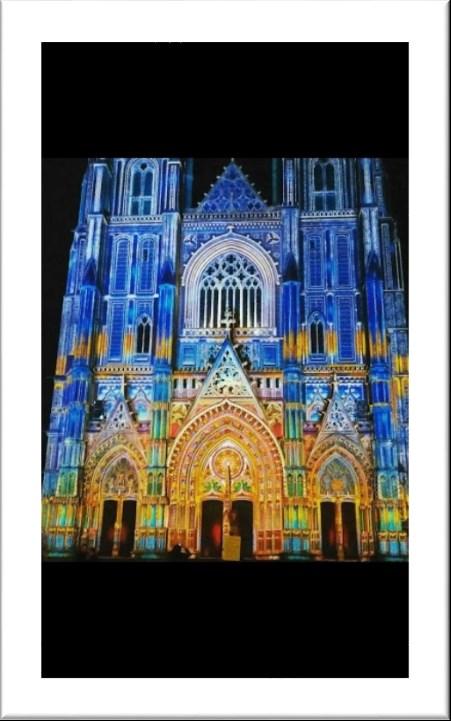





Turn over to see our runners up...










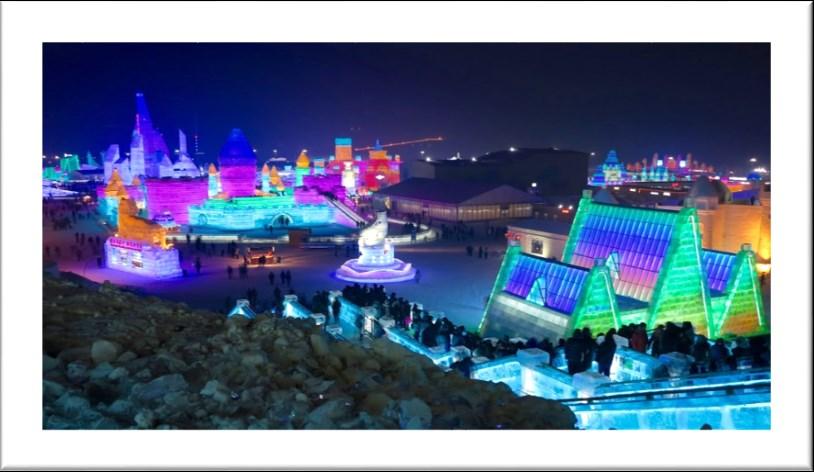
















Congratulations to Demi Dale, whose beautiful picture of Iceland won our Winter Photo Competition and is this issue’s cover photo! And a big well done to Amy Brown and Christopher Burden whose lovely photos are our runners up. To see more of our favourite entries, take a look inside...

CHRISTOPHER BURDEN, Vienna
